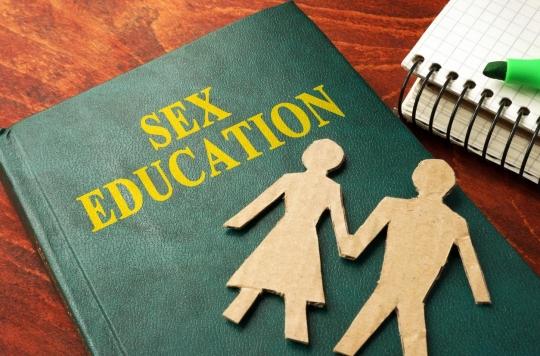For the first time, an American study revealed that the number of pregnant teenagers could decrease thanks to a real education program on sexual life delivered at the end of middle school or at the beginning of high school.

- At least 10 million girls aged 15 to 19 face unwanted pregnancies each year in developing countries.
- The legal deadline for having recourse to abortion is thus increased from 12 to 14 weeks of pregnancy.
- Funding for a more comprehensive sex education program would have reduced adolescent birth rates by more than 3%.
Between one and two hours per year. This is the time actually dedicated, in France, to sex education for college and high school students, according to investigation produced by the High Council for Equality between Women and Men (HCE) and published in 2016. “At least three annual sexuality education sessions are set up in colleges and high schools. They link and complement the various lessons taught in class”, specifies the Ministry of National Education on his website.
According to the HCE survey, conducted among 3,000 schools, several schools have encountered difficulties in carrying out sex education sessions. “The lack of financial means, the availability of personnel and the management of timetables are perceived as the main obstacles to the implementation of sex education”, can we read in the survey. However, these courses and sessions, which cover biology, reproduction, contraception, abortion, sexually transmitted infections and the notion of “respect”, can have a real impact on the behavior of adolescents.
The United States has more people likely to become parents as teenagers
According to sociologists at New York University (United States), the implementation of more comprehensive sex education programs would lead to a decline in teenage pregnancies. To reach this conclusion, the researchers conducted a study, including the results were recently published in the journal Proceedings of the National Academy of Sciences.
“In the United States, women are much more likely to become teenage mothers than in other wealthy countries. Teenage births are particularly likely to be reported as unintended, sparking debate on the issue to know if better information on sexuality and contraception could lead to a reduction in teenage pregnancies”, wrote the scientists.
For the purposes of their work, the authors focused on the federal teen pregnancy prevention program, launched in 2010 and funded by the government, to study the impact of sex education programs. This program, taught in ninth or second year, provides more complete information on sexuality, contraception and reproductive health than programs promoting abstinence only. Sociologists also looked at teenage birth rates in 55 US counties before and after the program was implemented. They compared this data to that of more than 2,800 counties that did not receive funding to implement this program.
A drop in teen pregnancies thanks to more comprehensive sex education
According to the results, funding a more comprehensive sex education program would have led to a reduction of more than 3% in the birth rate among adolescent girls. The researchers found that in the first year, teenage pregnancy rates decreased by 1.5%. Five years later, the birth rate had fallen by about 7%, an average reduction of more than 3% over the period studied.
“We have known for some time that programs promoting abstinence alone are ineffective in reducing adolescent birth rates. succeed in lowering teenage pregnancy rates,” Lawrence Wu, a professor in New York University’s sociology department and lead author of the study, said in a statement.
.

















